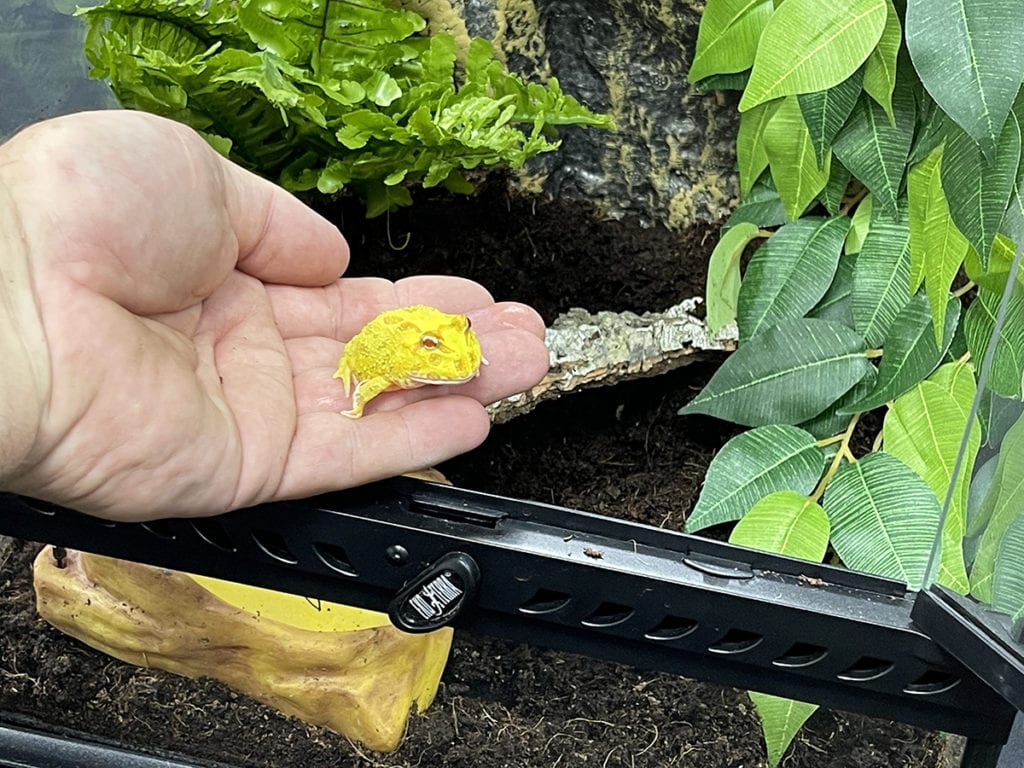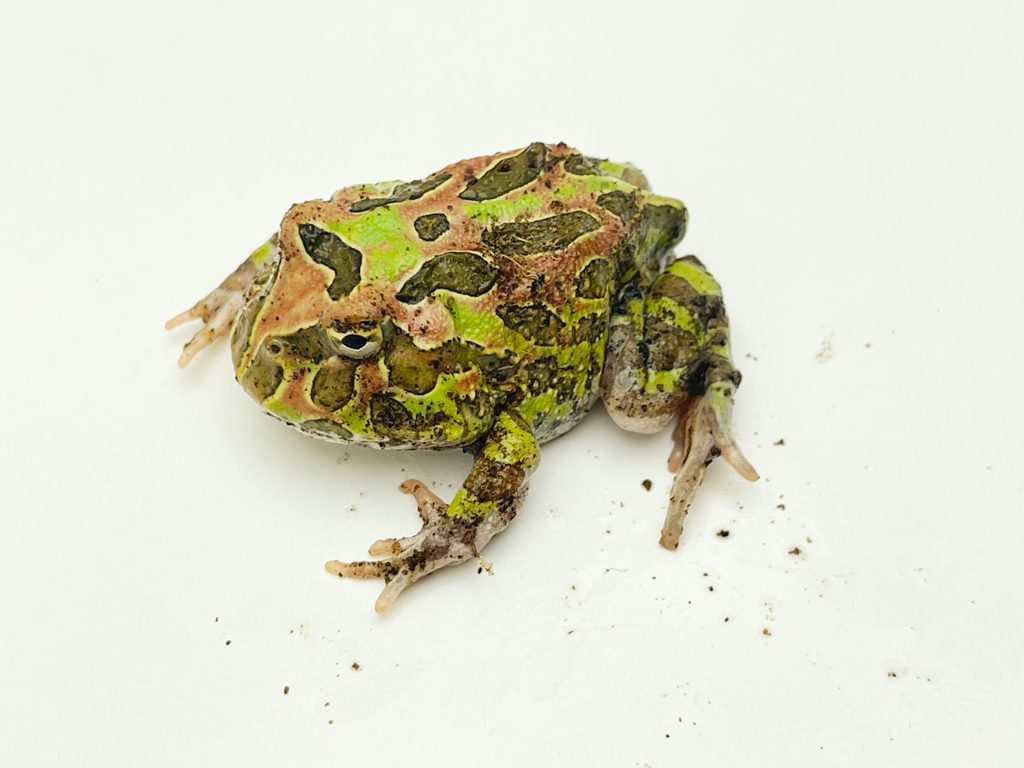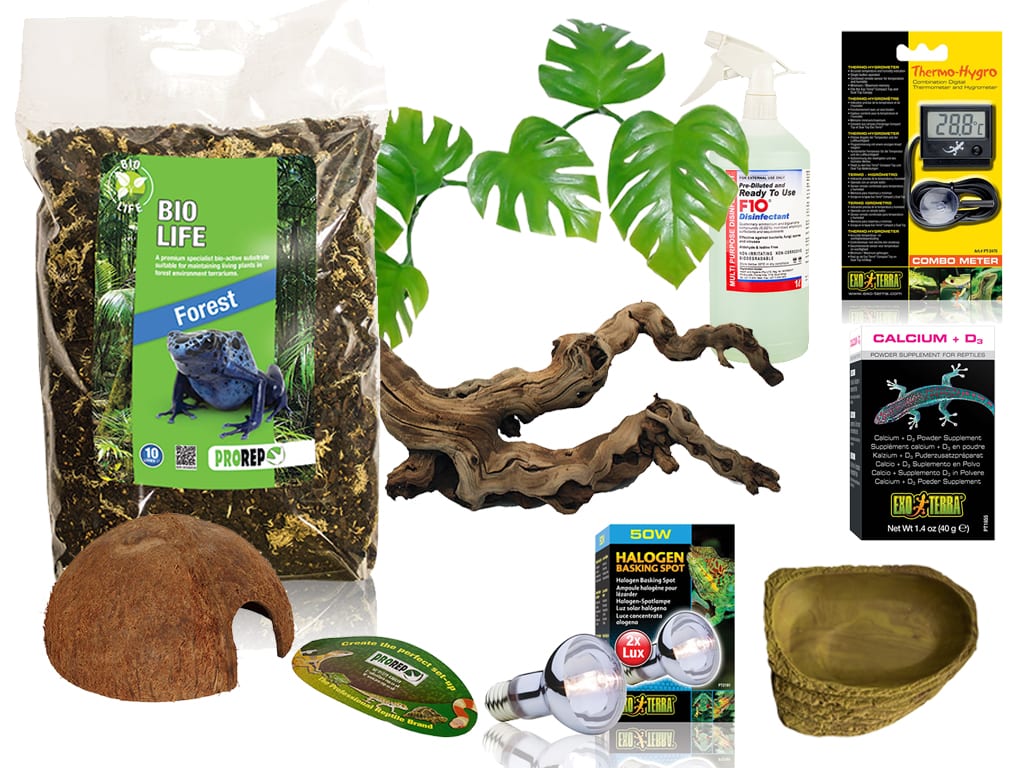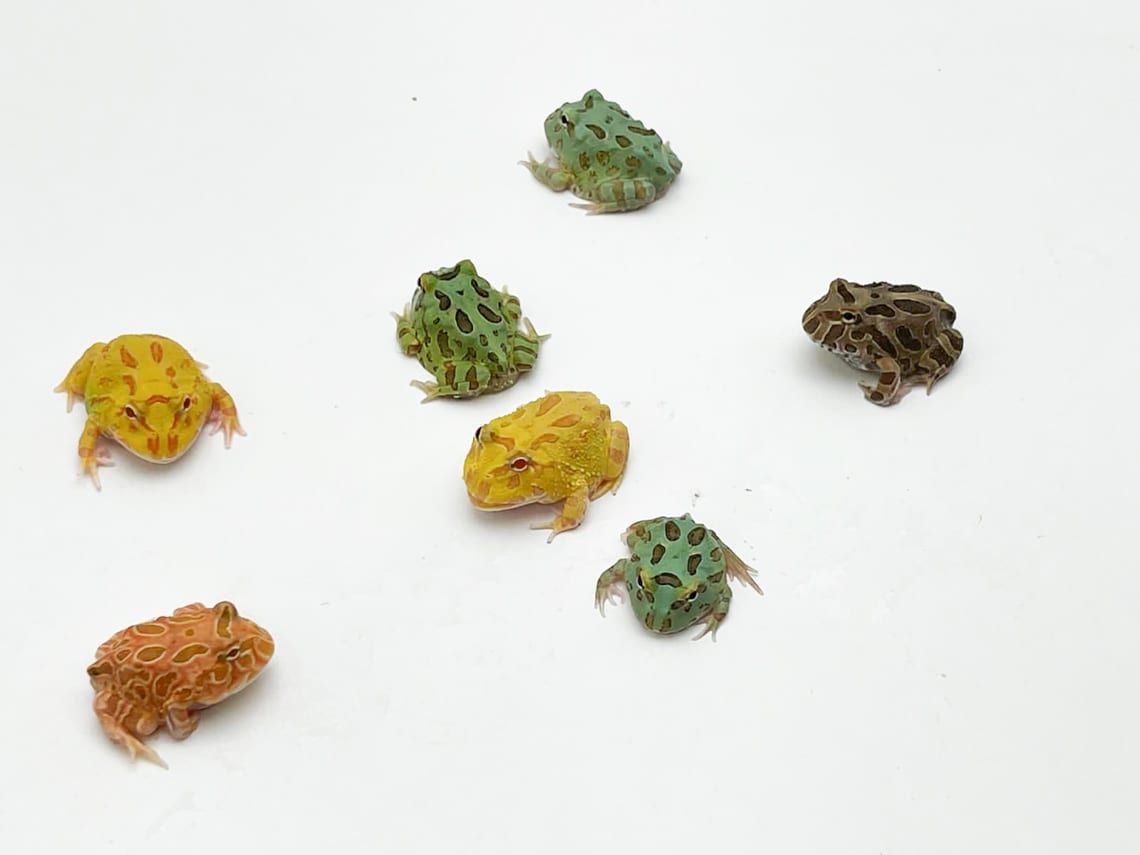
Horned Frog
Care Sheet

Horned frogs are also known among keepers as ‘Pacman’ frogs, aptly named due to their large mouths which covers most of their face.
Horned frogs are fascinating amphibians who are ferocious eaters. They enjoy a diet of locusts, crickets, worms and adult horned frogs enjoy a pinkie mouse every few days as part of a mixed diet. Care should be taken not to over feed horned frogs. Insects should be dusted with calcium powder supplement.
Like other amphibians, frogs are born as spawn which advance into froglets (baby frogs who have just developed their legs) and become large and visually stunning as adults.
Horned frogs enjoy warm temperatures like the climate where they originate. Heat can be provided via a heat mat or lamp depending on what type of enclosure you choose.
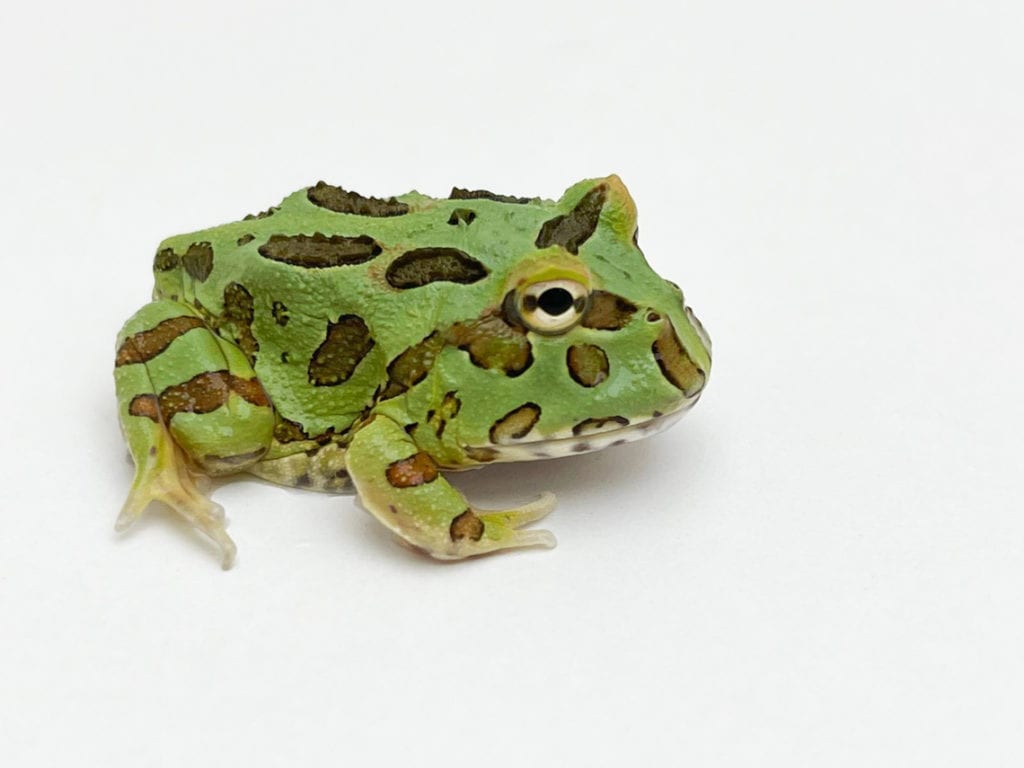

HANDLING YOUR FROG:
Frogs have very sensitive skin which produces oils to keep the frog safe. It is recommended to wear powder free latex gloves when handling your frog and be careful of your frog jumping away from your hands.
Frogs do not enjoy handling very much and should not be stroked as this can cause damage to their skin.
When picking up your frog, be wary of the mouth as large horned frogs can have a painful bite and tend to hang on. Scoop your frog up from the back and hold gently on a flat palm.


SEXING YOUR FROG
Frogs are notoriously hard to sex and it can be difficult to see the differences until adulthood.
Females grow larger than males. Other differences can be seen in horned frogs, even from a young age. Males tend to have short stubby noses where as female have longer pointier noses.
As adults, males will have a darker throat than females and when in the presence of other males, male horned frogs will croak. This is mating behaviour. Males will compete for a female by making the loudest noise and often fighting.
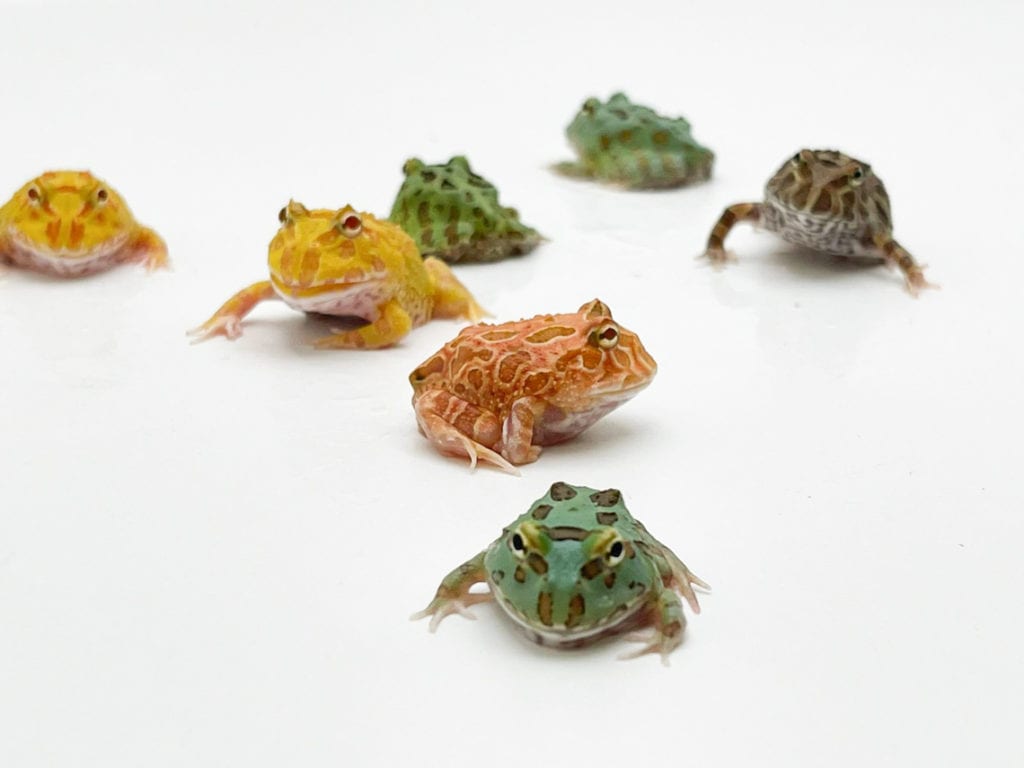

HEALTH CHECK
Eyes– Eyes should be clear and both open wide. Occasionally frogs develop eye infections which can be caused by the toxins in the substrate from it not being cleaned enough or from too much humidity in the enclosure. You can use honey diluted in non-chlorinated water on a cotton pad to bathe the eye. To prevent change substrate more regularly and ensure that humidity levels are correct.
Legs– Legs should be strong and your frog should be able to jump around. Frogs can suffer from MBD (metabolic bone disease) when they do not have enough calcium in their diet. MDB can be seen in frogs by the feet and legs looking disfigured or weak, along with the mouth gaping or hanging at the side. MDB is irreversible but adding calcium to the food twice a week will prevent further development.
Skin– Skin should look shiny and moist. If the frog does not have access to water or the enclosure is too dry you may notice a dry cocoon like shed which shows signs of the frog shutting down. Ensure the humidity in the enclosure is kept consistent and offer fresh dechlorinated water daily. Buy bottled water or leave tap water uncovered for 24-48 hours.








ADVICE FOR LIFE!
When you buy your Pet & Housing from us!
Priority Boarding | Advice available face to face, via Telephone, Facebook Chat, Email, Instagram

